
Operating and installation instructions
Refrigerator
with MasterFresh zone
K 1801 Vi, K 1811 Vi
K 1901 Vi, K 1911 Vi
To avoid the risk of accidents or
damage to the appliance, it is
essential to read these instructions
before it is installed and used for the
first time.
M.-Nr. 09 169 990
en - GB, HK

Description of the appliance.........................................5
Caring for the environment..........................................7
Warning and Safety instructions .....................................8
How to save energy ...............................................13
Switching on and off ..............................................14
Switching the appliance on ..........................................14
Operation ........................................................14
Switching off .....................................................15
Settings mode ....................................................16
Switching off for longer periods of time .................................17
The correct temperature ...........................................18
...intherefrigerator and the MasterFresh drawers .......................18
Dynamic cooling ..................................................18
Setting the temperature in the refrigerator...............................18
Temperature range ................................................19
Temperature (Fahrenheit/Celsius) ....................................19
Temperature display ...............................................20
Temperature and door alarm .......................................21
Super cool ......................................................23
Storing food in the refrigerator section ...............................24
Different storage zones .............................................24
Food which is not suitable for storing in a refrigerator.......................25
When shopping for food ............................................25
Storing food correctly ..............................................25
Unpacked meat and vegetables ...................................25
Storing food in the MasterFresh zone ................................26
Storage temperature ...............................................26
Humidity level ....................................................26
Storing food in the MasterFresh drawers .............................26
Arranging the interior fittings .......................................30
Moving the shelves ................................................30
Fully extendable drawer ............................................30
The MasterFresh drawers ...........................................30
Adjusting the door shelves/bottle shelf .................................31
Automatic defrost ................................................33
Contents

Cleaning and care ................................................34
Before cleaning ...................................................34
Cleaning the interior and accessories ..................................34
Humidity filters ....................................................35
Ventilation gaps ...................................................36
Door seal ........................................................36
Problem solving guide ............................................37
Noises .........................................................40
After Sales / Guarantee ............................................41
Electrical connection..............................................42
Installation advice ................................................43
Location .........................................................43
Floor ............................................................44
Door hinging .....................................................44
Adjoining furniture/units .............................................44
Ventilation .......................................................45
Side-by-side installation.............................................45
To limit the opening angle of the door ..................................46
Appliance door dimensions (opening angle 90°) .........................47
Appliance door dimensions (opening angle 115°) ........................47
Building-in dimensions ...........................................48
Installation ......................................................50
Tools and accessories required ......................................50
Weight of the door front .............................................51
Building into a peninsular run ........................................51
Building-in at the end of a run of units..................................51
Aligning the housing unit ............................................52
Checking the building-in niche .......................................52
Before installation .................................................52
Preparing the niche ................................................53
Installation accessories ..........................................53
Anti-tipping mechanism ..........................................54
An alternative anti-tipping mechanism ...............................56
Placing the appliance in the niche ....................................57
Aligning the appliance..............................................58
Securing the appliance in the niche ...................................59
Contents

Preparing the furniture front..........................................61
Securing and aligning the furniture door ................................63
Securing the covers................................................64
Fitting the plinth facing .............................................65
Fitting the air separator .............................................66
Contents

a Access sensor
b Sensor for selecting the refrigerator
zone
c Sensor for selecting the upper
MasterFresh drawer
d Sensor for selecting the lower
MasterFresh drawer
e Sensor for selecting the temperature
in the refrigerator zone
(X for colder; Y for warmer)
f Symbols for foods that require a
moist atmosphere in the MasterFresh
drawer (left: High humidity;
right: Low humidity)
g On/Off sensor for the Super cool
function
h Sensor for switching off the
temperature or door alarm
(only visible when the alarm is
sounding)
Description of the appliance
5

a Butter and cheese compartment
b Adjustable shelves
c Door shelves
d Fully extendable drawer
e Control panel
f Rocker switch for switching the
whole appliance on and off
g Humidity filters for the MasterFresh
drawers
h MasterFresh drawers
Description of the appliance
6

Disposal of the packing
material
The transport and protective packing
has been selected from materials which
are environmentally friendly for
disposal, and should be recycled.
Ensure that any plastic wrappings,
bags etc. are disposed of safely and
kept out of the reach of babies and
young children. Danger of suffocation!
Disposal of your old appliance
Electrical and electronic appliances
often contain materials which, if
handled or disposed of incorrectly,
could be potentially hazardous to
human health and to the environment.
They are, however, essential for the
correct functioning of your appliance.
Please do not therefore dispose of it
with your household waste.
Please dispose of it at your local
community waste collection / recycling
centre or contact your dealer for
advice. Ensure that it presents no
danger to children while being stored
for disposal.
Take care not to damage the pipework
at the back of it before or during
transportation to an authorised
collection depot.
In this way, refrigerant in the pipework
and oil in the compressor will be
contained, and will not leak out into the
environment.
Caring for the environment
7

This appliance complies with all
relevant safety requirements.
Improper use can, however, present
a risk of both personal injury and
material damage.
To avoid the risk of accidents and
damage to the appliance, please
read these instructions carefully
before installation and before using
it for the first time. They contain
important notes on installation,
safety, operation and maintenance.
Keep these instructions in a safe
place and pass them on to any
future owner.
,Warning!
This appliance is very heavy and
can tip forwards when the door is
open. Keep the appliance door shut
until the appliance has been built in
and secured in its housing in
accordance with these operating
and installation instructions.
Correct application
~
This appliance is not designed for
commercial use. It is intended for use in
domestic households and in similar
working and residential environments
such as:
–
Shops
–
Offices and showrooms
and by residents in establishments
such as:
–
Hostels and guest houses.
This appliance is not intended for
outdoor use.
This appliance is intended for domestic
use only for the cool storage of food
and drink.
Any other usage is not supported by
the manufacturer and could be
dangerous. Miele cannot be held liable
for damage resulting from incorrect or
improper use or operation of the
appliance.
~
This appliance can only be used by
people with reduced physical, sensory
or mental capabilities, or lack of
experience and knowledge, if they are
supervised whilst using it, or have been
shown how to use it in a safe way and
understand the hazards involved.
Warning and Safety instructions
8

Safety with children
~
Children 8 years and older may use
the appliance only if they have been
shown how to use it in a safe way and
understand the hazards involved.
~
Children under 8 years of age must
be kept away from the appliance unless
they are constantly supervised.
~
This appliance is not a toy! To
prevent the risk of injury, do not allow
children to play with the appliance, for
example to climb inside the drawers or
to swing on the door.
~
The door hinges can cause injury.
Keep children well away at all times.
Technical safety
~
Before setting up the appliance,
check it for any externally visible
damage. Do not install and use a
damaged appliance.
A damaged appliance may be
dangerous.
~
If the connection cable is faulty it must
only be replaced by a service technician
authorised by the manufacturer to protect
the user from danger.
~
This appliance contains the coolant
Isobutane (R600a), a natural gas which
is environmentally friendly. Although it
is flammable, it does not damage the
ozone layer and does not increase the
greenhouse effect. The use of this
coolant has, however, led to a slight
increase in the noise level of the
appliance. In addition to the noise of
the compressor, you might be able to
hear the coolant flowing around the
system. This is unavoidable, and does
not have any adverse effect on the
performance of the appliance.
Care must be taken during the
transportation and installation of the
appliance that no parts of the cooling
system are damaged. Leaking
refrigerant can damage the eyes.
In the event of any damage:
–
avoid any flames or anything which
creates a spark,
–
disconnect it from the mains,
–
ventilate the room where the
appliance is located for several
minutes, and
–
contact the Service Department for
advice.
Warning and Safety instructions
9

~
The more coolant there is in an
appliance, the larger the room it should
be installed in. In the event of a
leakage, if the appliance is in a small
room, there is the danger of
combustible gases building up.
For every8gofcoolant at least 1 m
3
of
room space is required. The amount of
coolant in the appliance is stated on the
data plate inside the appliance.
~
Safe operation of the appliance is
only assured if it has been installed and
connected in accordance with these
operating and installation instructions.
~
Before connecting the appliance,
make sure that the connection data on
the data plate (voltage and frequency)
matches the mains electricity supply.
This data must correspond in order to
avoid the risk of damage to the
appliance. Consult a qualified
electrician if in any doubt.
~
Do not connect the appliance to the
mains electricity supply by a
multi-socket adapter or an extension
lead. These do not guarantee the
required safety of the appliance (e.g.
danger of overheating).
~
The electrical safety of this
appliance can only be guaranteed
when it is correctly earthed. It is most
important that this basic safety
requirement is observed and regularly
tested and where there is any doubt,
the household wiring system should be
inspected by a qualified electrician.
The manufacturer cannot be held liable
for damage or injury caused by the lack
of or inadequacy of an effective
earthing system (e.g. electric shock).
~
Installation, maintenance and
repairs may only be carried out by a
suitably qualified and competent
person in strict accordance with current
national and local safety regulations.
Repairs and other work by unqualified
persons could be dangerous. The
manufacturer cannot be held liable for
unauthorised work.
~
While the appliance is under
guarantee, repairs should only be
undertaken by a service technician
authorised by the manufacturer.
Otherwise the guarantee will be
invalidated.
~
The appliance must be isolated from
the electricity supply during installation,
maintenance and repair work.
~
Faulty components must only be
replaced by genuine Miele original
spare parts. The manufacturer can only
guarantee the safety of the appliance
when Miele replacement parts are
used.
~
This appliance must not be used in
a non-stationary location (e.g. on a
ship).
~
In areas which may be subject to
infestation by cockroaches or other
vermin, pay particular attention to
keeping the appliance and its
surroundings clean at all times. Any
damage caused by cockroaches or
other vermin will not be covered by the
guarantee.
Warning and Safety instructions
10

Correct use
~
Do not operate any electrical
equipment (e.g. an electric ice-cream
maker) inside the appliance. Danger of
sparks and explosion.
~
Do not store explosive materials in
the appliance or any products
containing propellants (e.g. spray
cans). Thermostats switching on may
produce sparks which could present a
fire hazard. Flammable compounds
could explode.
~
Observe the "use-by" dates given on
food to avoid the risk of food poisoning.
Storage times will depend on several
factors, including the freshness and
quality of the food as well as the
temperature at which it is stored. Follow
the instructions given on the food
manufacturer's packaging regarding
storage conditions and "use-by" dates.
~
Do not use sharp edged objects to
– remove frost and ice,
–
separate frozen foods or remove ice
trays.
They will damage the evaporator,
causing irreversible damage to the
appliance.
~
Do not use defrosting sprays or
de-icers, as they might contain
substances which could damage the
plastic parts or which could cause a
build-up of gases and pose a danger to
health.
~
Never use a steam-cleaning
appliance to defrost or clean this
appliance. Steam could reach the
electrical components and cause a
short circuit.
~
If storing alcohol with a high
percentage proof, make sure it is tightly
closed and stored upright.
Danger of explosion.
~
Do not use any oils or grease on the
door seal, as these will cause the seal
to deteriorate and become porous with
time.
~
If storing food which contains a lot of
fat or oil, make sure that it does not
come into contact with plastic
components as this could cause stress
cracks.
~
Do not cover or block the air vents
as this could impair the efficiency of the
appliance, increase the electricity
consumption and could cause damage
to the appliance.
~
This appliance is designed for use
within certain climate ranges (ambient
temperatures), and should not be used
outside this range. The climate range
for your appliance is stated on the data
plate inside the appliance.
Installing it in a room with too low an
ambient temperature, e.g. a garage,
can lead to the appliance switching off
for longer periods so that it cannot
maintain the required temperature.
Warning and Safety instructions
11

Disposal of your old appliance
~
Before disposing of an old
appliance, first make the door latches
or locks unusable.
This way you will prevent children from
accidentally locking themselves in and
endangering their lives.
~
Be careful not to damage any part of
the pipework whilst awaiting disposal,
e.g. by
–
puncturing the refrigerant channels
in the evaporator.
–
bending any pipework.
– scratching the surface coating.
Splashes of refrigerant can damage the
eyes.
The manufacturer cannot be held
liable for damage caused by
non-compliance with these Warning
and Safety instructions.
Warning and Safety instructions
12

Normal energy
consumption
Increased energy
consumption
Installation site In a ventilated room. In an enclosed, unventilated room.
Protected from direct sunlight. In direct sunlight.
Not near to a heat source (radiator,
oven).
Near to a heat source (radiator,
oven).
Where the ideal ambient room
temperature is approx. 20°C.
Where there is a high ambient room
temperature.
Do not cover the ventilation gaps
and dust them regularly.
Temperature setting
with a thermostat
which is approximate
(set in stages).
With a medium setting of 2 to 3. With a high setting: the lower the
temperature in the compartment, the
higher the energy consumption.
Temperature setting
with a thermostat which
is exact to the degree
(digital display).
Larder section 8 to 12 °C
On appliances with winter setting,
please make sure that the winter
setting is switched off when the
ambient temperature is warmer than
16 °C .
Refrigerator section 4 to 5 °C
PerfectFresh zone just above 0 °C
Freezer section -18 °C
Wine storage section 10 to 12 °C
Use Drawers, shelves and racks
arranged as they were when the
appliance was delivered.
Only open the door when necessary
and for as short a time as possible.
Frequent opening of the door for
long periods will cause a loss of
coldness.
Store food in an organised way. Searching for an item will mean the
door is open for longer.
Allow hot food and drinks to cool
down before placing them in the
appliance.
Hot food will cause the compressor
to run for a long time, as the
appliance will have to work harder
to reduce the temperature.
Store food covered or packaged. The evaporation or condensation of
liquids will cause a loss of coldness
in the refrigerator.
Place frozen food in the refrigerator
to defrost.
Do not over-fill the appliance to
allow air to circulate.
Defrosting Defrost the freezer section when a
layer of ice 0.5 cm thick has built
up.
A layer of ice hinders the cold from
reaching the frozen food, and
increases energy consumption.
How to save energy
13

Before using for the first time
^
Clean the inside of the appliance and
the accessories with lukewarm water
and a little washing up liquid, and
then dry with a soft cloth.
Important:
To ensure the correct functioning of
the appliance, let it stand for approx.
1 1/2 - 2 hours, or for approx. 8
hours if it has been transported on
its side to its final location before
connecting it to the mains.
Switching the appliance on
^ Open the appliance door.
^ Press the rocker switch on the right
side underneath the control panel.
This switches all of the zones in the
appliance on or off together.
The appliance will start to cool, and the
interior lighting will come on when the
door is opened.
The access sensor in the control panel
will also light up.
To enable the temperature to get
sufficiently cold inside the
appliance, allow the appliance to
run for a few hours before placing
food in it.
Please note: Switching the
appliance off with the rocker switch
does not disconnect the appliance
from the mains.
Operation
A light touch of the finger on the
sensors is all that is required to operate
this appliance.
Please note:
– A sensor which is available for
selection is always highlighted in
white.
– A sensor which has been selected is
always highlighted in yellow.
^
Touch the access sensor so that it is
highlighted in yellow.
The sensors for the three zones in the
appliance will now appear in the control
panel: refrigerator zone, upper
MasterFresh drawer and lower
MasterFresh drawer.
Switching on and off
14

To select settings for your appliance
(e.g. to set the temperature, etc),
^
touch the sensor for the particular
zone of the appliance where you
would like to select the settings.
The applicable sensor will then be
highlighted in yellow, and depending
on the zone, further settings which may
be selected will now appear in the
display.
Depending on which zone you have
selected, you can
– adjust the temperature, or
– select the Super cool function, or
– adjust the humidity levels for the
MasterFresh drawers.
Please refer to the relevant section for
more information.
To deselect a zone
^
touch the sensor of the selected zone
again so that it is highlighted in white,
or select a different sensor.
To finish selecting settings,
^ touch the access sensor so that it is
highlighted in white.
Your last selected settings will now be
saved to memory.
If you do not touch the access sensor,
the electronics for accessing the
settings will switch off after a period.
Switching off
^
Press the rocker switch on the
right-hand side underneath the
control panel.
The cooling system and the lighting are
now switched off.
Switching on and off
15

Settings mode
You can select further settings in
settings mode and you can also select
certain appliance functions via the
control panel and adjust the settings.
The settings for the different functions
are described in more detail in the
relevant section of these instructions.
Overview of functions that can be
selected in settings mode:
Function Symbol
To enter or leave settings
mode
;
To select the
temperature unit
(see "The correct
temperature")
†
No function selected ;
To switch the sensor
tone on/off (see
"Switching on and off")
=
Switching the sensor tone on/off
The tone which sounds each time a
sensor is touched can be deactivated.
^
Touch the access sensor to highlight
it in yellow.
^ Touch the sensor for the refrigerator
zone so that it is highlighted in
yellow.
^ Take note of the position of the X
sensor (but do not touch it!).
^ Touch the access sensor until it is
highlighted in white and all of the
other sensors are no longer lit up.
^ Place your finger in the position of the
X sensor, and leave it there.
^
At the same time, briefly touch the
access sensor (without moving your
finger from the X sensor).
Switching on and off
16

^
Leave your finger on the X sensor for
another 4 seconds until c and the Y
sensor also appear in the display.
^
Now touch the X sensor repeatedly
until b appears in the display.
^
Touch the access sensor again.
^
By touching the X sensor, you can
now select whether the sensor tone is
switched on or off:
= 0: Sensor tone switched off
= 1: Sensor tone switched on
= –: Return to menu
^ After selecting a new setting, touch
the access sensor to confirm your
choice.
^ Touch the X sensor repeatedly until ;
appears in the display.
^
Touch the access sensor.
You have now left settings mode.
The door alarm is automatically
disabled when the appliance is in
settings mode. As soon as the door
is closed, the door alarm is activated
again.
Switching off for longer
periods of time
If the appliance is not going to be used
for a longer period of time, e.g. whilst
on holiday:
^
switch the appliance off,
^
disconnect it from the mains,
^
clean the appliance out and
^
leave the door ajar to air the
appliance.
If, during a long absence, the
appliance is switched off but not
cleaned out and the door is left shut,
there is a danger of mould and
odours building up inside the
appliance.
Switching on and off
17

It is very important to set the correct
temperature for storing food in the
appliance. Micro-organisms will cause
food which is not stored at the correct
temperature to deteriorate rapidly.
Temperature influences the growth rate
of these micro-organisms. Reducing
the temperature reduces their growth
rate.
The temperature in the appliance will
rise:
–
the more often the door is opened
and the longer it is kept open,
– the more food that is stored in it,
– the warmer the food is which is being
put into it,
– the higher the ambient temperature
surrounding the appliance.
The appliance is designed for use in
specific ambient temperatures
(climate ranges). Do not use in
ambient temperatures for which it is
not designed.
...intherefrigerator and the
MasterFresh drawers
We recommend a temperature of 4°C
in the refrigerator.
The temperature in the MasterFresh
drawers is controlled automatically and
is maintained at 1.5 °C.
Dynamic cooling
The dynamic cooling fan automatically
switches on when the cooling system
for the refrigerator switches on. It
distributes the temperature in the
appliance to all areas more evenly so
that all the food will be chilled to about
the same degree.
Setting the temperature in the
refrigerator
^ Touch the access sensor so that it is
highlighted in yellow.
^ Touch the sensor for the refrigerator
zone so that it is highlighted in
yellow.
^
The temperature inside the appliance
can be selected by touching the
arrow sensors on either side of the
temperature display.
By touching the
X sensor: the temperature will get
colder
Y sensor: the temperature will get
warmer.
The temperature range being set will
flash in the display as you do this.
The correct temperature
18

–
Touching the sensor once:
adjusts the temperature shown in
1 °C steps.
–
Keeping your finger on the sensor:
changes the temperature
continuously.
If the highest or lowest temperature that
it is possible to set is reached, the X or
Y sensor will disappear from the
display.
The temperature display on the
control panel always shows the
required temperature.
When you have adjusted the
temperature, wait for approx. 6 hours
if the appliance is not very full and
for approx. 24 hours if the appliance
is full before checking the temperature,
as it will take this long for the appliance
to reach the temperature. If, after this
time, the temperature is still too high or
too low, you will need to adjust it again.
Temperature range
The temperature can be adjusted:
–
In the refrigerator section from 2 °C
to8°C
The ambient temperature in the
room and the installation location
can affect the time it takes for the
appliance to reach the lowest
temperature. If the ambient
temperature is too high, the
appliance may not reach the lowest
temperature.
Temperature
(Fahrenheit/Celsius)
The temperature can be displayed in
degrees Celsius or degrees Fahrenheit.
^
Touch the access sensor so that it is
highlighted in yellow.
^ Touch the sensor for the refrigerator
zone so that it is highlighted in
yellow.
^ Take note of the position of the X
sensor (but do not touch it!).
^ Touch the access sensor until it is
highlighted in white and all of the
other sensors are no longer lit up.
^
Place your finger in the position of the
X sensor, and leave it there.
^
At the same time, briefly touch the
access sensor (without letting go of
the X sensor).
^
Leave your finger on the X sensor for
another 4 seconds until c and the Y
sensor also appear in the display.
The correct temperature
19

^
Now touch the X sensor repeatedly
until † appears in the display.
^
Touch the access sensor again.
^
By touching the X sensor, you can
now set the temperature to be
displayed in Fahrenheit or Celsius.
†0: Temperature in Fahrenheit
†1: Temperature in Celsius
† –: Return to menu
^ After selecting a new setting, touch
the access sensor to confirm your
choice.
^ Now touch the X sensor repeatedly
until c appears in the display.
^ Touch the access sensor again.
You have now left settings mode.
The door alarm is automatically
disabled when the appliance is in
settings mode. As soon as the door
is closed, the door alarm is activated
again.
Temperature display
The temperature display on the
control panel always shows the
required temperature.
The temperature display will flash if
–
a different temperature is being set,
–
the temperature in the appliance has
risen by several degrees, indicating
that the appliance is warming up too
much.
This loss of coldness is no cause for
concern if it is due to the door being left
open for a while, e.g. for removing or
storing a large amount of food.
The correct temperature
20
Page is loading ...
Page is loading ...
Page is loading ...
Page is loading ...
Page is loading ...
Page is loading ...
Page is loading ...
Page is loading ...
Page is loading ...
Page is loading ...
Page is loading ...
Page is loading ...
Page is loading ...
Page is loading ...
Page is loading ...
Page is loading ...
Page is loading ...
Page is loading ...
Page is loading ...
Page is loading ...
Page is loading ...
Page is loading ...
Page is loading ...
Page is loading ...
Page is loading ...
Page is loading ...
Page is loading ...
Page is loading ...
Page is loading ...
Page is loading ...
Page is loading ...
Page is loading ...
Page is loading ...
Page is loading ...
Page is loading ...
Page is loading ...
Page is loading ...
Page is loading ...
Page is loading ...
Page is loading ...
Page is loading ...
Page is loading ...
Page is loading ...
Page is loading ...
Page is loading ...
Page is loading ...
Page is loading ...
Page is loading ...
-
 1
1
-
 2
2
-
 3
3
-
 4
4
-
 5
5
-
 6
6
-
 7
7
-
 8
8
-
 9
9
-
 10
10
-
 11
11
-
 12
12
-
 13
13
-
 14
14
-
 15
15
-
 16
16
-
 17
17
-
 18
18
-
 19
19
-
 20
20
-
 21
21
-
 22
22
-
 23
23
-
 24
24
-
 25
25
-
 26
26
-
 27
27
-
 28
28
-
 29
29
-
 30
30
-
 31
31
-
 32
32
-
 33
33
-
 34
34
-
 35
35
-
 36
36
-
 37
37
-
 38
38
-
 39
39
-
 40
40
-
 41
41
-
 42
42
-
 43
43
-
 44
44
-
 45
45
-
 46
46
-
 47
47
-
 48
48
-
 49
49
-
 50
50
-
 51
51
-
 52
52
-
 53
53
-
 54
54
-
 55
55
-
 56
56
-
 57
57
-
 58
58
-
 59
59
-
 60
60
-
 61
61
-
 62
62
-
 63
63
-
 64
64
-
 65
65
-
 66
66
-
 67
67
-
 68
68
Ask a question and I''ll find the answer in the document
Finding information in a document is now easier with AI
Related papers
-
Miele K 9752 iD-1 User manual
-
Miele K 12820 SD ed Installation guide
-
Miele 1330574 Installation guide
-
Miele 10745790 Installation guide
-
Miele KF2982SF Installation guide
-
Miele K 12620 SD Installation guide
-
Miele K 14820 SD ed Installation guide
-
Miele K14820SDED Installation guide
-
Miele K 851 iD User manual
-
Miele 09 157 540 User manual
Other documents
-
Miele Appliances 10745930 Installation guide
-
 JAG PLUMBING PRODUCTS 17-136 User manual
JAG PLUMBING PRODUCTS 17-136 User manual
-
Home Decorators Collection EN1201-CTW Operating instructions
-
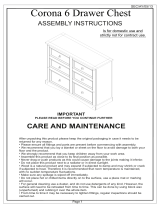 Mercers Furniture Corona 6 Assembly Instructions Manual
Mercers Furniture Corona 6 Assembly Instructions Manual
-
V-ZUG 953 Installation guide
-
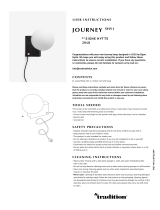 &Tradition JOURNEY SHY1 User manual
&Tradition JOURNEY SHY1 User manual
-
Cecilware MSDR2.3 User manual
-
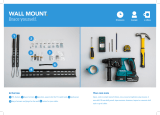 BlueBuilt BBFWM5075 User manual
BlueBuilt BBFWM5075 User manual
-
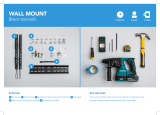 BlueBuilt BBFWM5075 User manual
BlueBuilt BBFWM5075 User manual
-
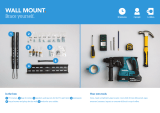 BlueBuilt BBFWM3250 Operating instructions
BlueBuilt BBFWM3250 Operating instructions









































































